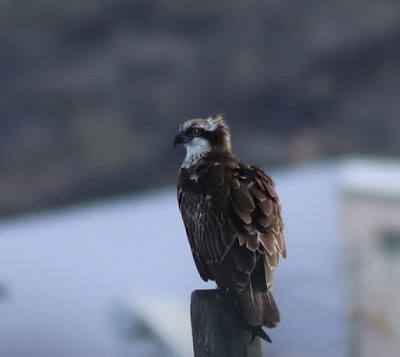As 2020 draws to a close, I thought I would include a post to briefly recap on the most interesting birding event of the year: the long stopover on La Palma of KL9, a ringed juvenile Osprey (Pandion haliaetus) from the north of Scotland.
I discovered this first-time migrant near the Dos Pinos reservoir (Los Llanos de Aridane) on Sep 20, in rather exotic surroundings for a Scottish osprey. See photo above.
The blue Darvic ring became visible when the bird took flight, and the relevant details were duly reported to The Roy Dennis Wildlife Foundation, who traced the ringer.
For the next 6 weeks, the young bird settled in the area around the reservoir, and very quickly learned to catch the introduced Tilapia fish. Initially it devoured its catch in situ, on the concrete banks, but later tended to carry its prey off to a nearby utility pole, outside the reservoir fence. KL9's fishing expertise reached the point where success often came at the first attempt.
I made regular visits to the reservoir from Sep 20 onwards, observing KL9 for the last time on Oct 28. A local family whose house overlooks the reservoir reported seeing the bird around Nov 4, which must be the approximate date on which KL9 decided to leave the island, after an unusually long sojourn.
Let's hope that KL9 has a successful onward flight to its probable destination in West Africa, and eventually makes it back to the north of Scotland to breed.





















































